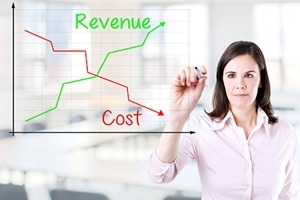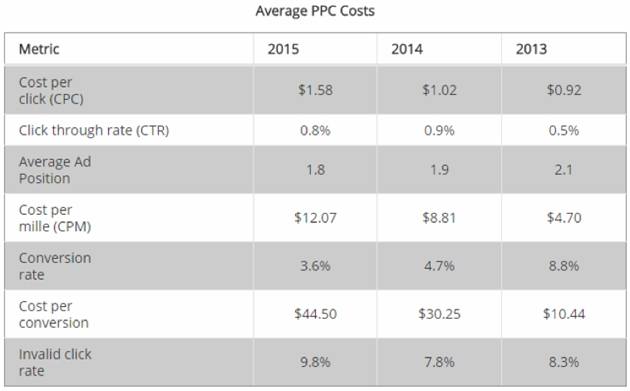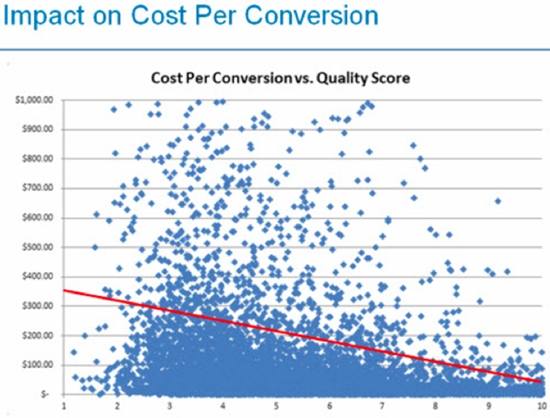
“I turned off Google AdWords because the cost-per-lead was too high.” That line from Neil Patel’s blog post, “What Spending $66,372.09 on Paid Advertising Taught Me,” featuring different pay-per-click (PPC) methods, still resonates after four years because it highlights a common problem: The pay-per-click model wants us to throw away a lot of cash.
In case haven’t noticed, you (and a lot of other advertisers) recently have been paying more for PPC campaigns than you used to.
The average PPC costs (cost-per-click, cost-per-mile, cost-per-conversion, etc.) have increased in the past few years, according to a survey of 50 advertisers on the Google AdWords ad network by Hochman Consultants:

And so we find ourselves in a tough situation: The rising cost makes PPC advertising appear as if it’s the black sheep in the world of digital advertising; at the same time, it’s a hassle-free way of bringing visitors to your website/landing page when they’re searching for specific key phrases.
And case studies show that advertisers have been able to use it to increase conversions in a short period of time.
So, putting a stop to your PPC campaigns might not be a good idea.
Fortunately, you don’t have to—if you can reduce your PPC costs.
But how can you minimize costs? If you can’t think of doing anything else other than lowering your bid, here are four PPC cost-cutting tips you might find quite useful. (Note: Google has killed right-hand-side ads, so the following tips are applicable only to the ads that appear at the top of search results.)
1. Harness the power of Quality Score
Google uses Quality Score (QS) to determine where advertisers rank in search engine results pages (SERPs) and how much they spend. It requires advertisers to prove their relevance, and it’s a way for smaller businesses to pay less for top keyword positions.
These factors affect your Quality Score:
- CTR (click-through rate)
- Ad text relevance
- Quality of the landing page
- Historical campaign performance
- Relevance of the ad group and selected keyword
A higher QS gives you a better ad rank, and it could qualify your ad to rank above advertisers who placed a higher bid than you. And WordStream’s Larry Kim found that a higher QS decreases cost-per-click and cost-per-conversion:

- Long-tail keywords: Categorize them into specific groups that can be effectively tied to ad campaigns. You can add branded and negative keywords (phrases or words that you don’t want to serve ads for) to further refine your keyword list.
- Ad extensions: Call extensions and other options give more real estate to your ad, so at no extra cost it has a better chance of attracting clicks.
- Landing page best-practices: For instance, you should rearrange content to place the most valuable content first. Get rid of any sentences that aren’t absolutely necessary so that you stay focused on the visitor. Also, make sure the CTA is clearly visible and visitors don’t have to scroll to see the calls to action. You should also pay attention to the loading time; aim for a loading time of less than 1 second. (Read how…
COMMENTS